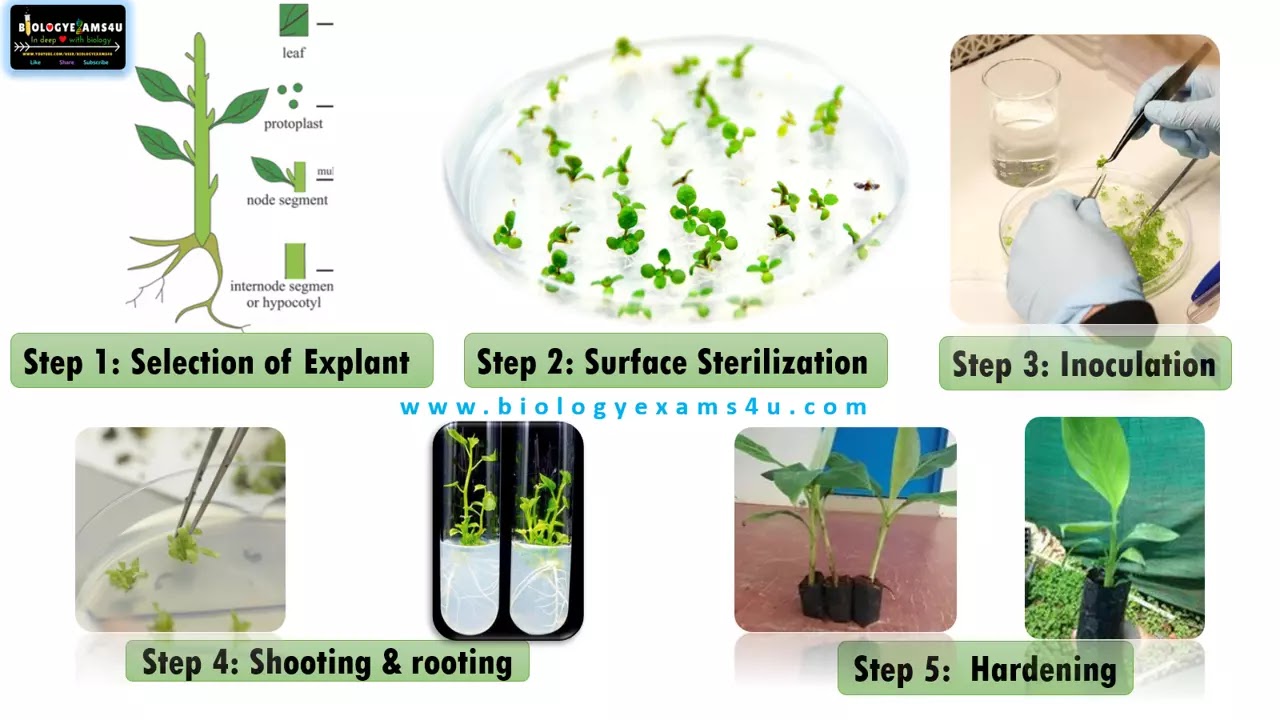5 Steps in Plant Tissue Culture
What is Plant tissue culture?
Tissue culture is the in vitro aseptic culture of cells, tissues, organs or whole plant under controlled nutritional and environmental conditions in a laboratory often to produce the clones of plants.
Because of the
property known as totipotency of plant cells, plant tissue culture is
comparatively easier than animal tissue culture. The ability of a single cell to
give rise to an entire organism is referred to as totipotency.
Any part of the plant like shoot tip, meristem, node, root tip or
protoplast used for plant tissue culture is called explant.
The explants are taken from disease free mother plant with desirable
traits, often grown under controlled glass house condition.
Step 2: Surface Sterilization
The major difficulty
in establishing a successful culture is microbial contamination. The explant
should be thoroughly sterilized to remove microorganisms. The sterilization of
explant surface with distilled water and other surface sterilants to remove
microorganisms is called surface sterilization.
- Wash in running tap water many times.
- Wash with detergent or 70% Ethyl alcohol (initial
sterilization)
- Wash in distilled water after ethanol treatment
- Transfer the explant to laminar air flow (LAF) that provide sterile environment for aseptic culture.
- Treat with 0.1% Mercuric chloride HgCl2 (final sterilization)
- Wash in distilled water many times.
- Trim the sides of explant with direct contact to HgCl2 as HgCl2 kill cells.
- Now explant is ready for inoculation.
Step 3: Inoculation
Inoculation in a Suitable sterile growth medium like MS medium, White's
medium etc inside LAF.
Step 4: Shooting & rooting
Establishment of the culture. The explant often give rise to callus at first. Callus is an undifferentiated mass of cells with meristematic activity capable of division and differentiation.
Rooting and shooting is induced by different plant hormone combinations. The combination of auxin and cytokinin works with majority of plants in
plant tissue culture. High auxin low
cytokinin ratio favors rooting and law auxin high cytokinin ratio induces
shooting. If the nutrients in the culture medium is depleted, we transfer the
culture to a fresh medium known as sub-culturing.
- High auxin:low cytokinin=rooting
- Low auxin:high cytokinin= shooting
Step 5: Acclimatization and Hardening
The process of transferring or transplanting a tissue cultured
plant from the lab to the land is called hardening. The tissue cultured
plantlets are gradually transferred from milder condition to field environment in
sequential steps.
- First under the fluorescent light of the laboratory
- Then transfer to green house; then to shade.
- Once the plant has established with sufficient leaves and well developed roots, then transfer it to the field with regular monitoring.
- This gradual process of acclimatization of tissue cultured plant from lab to land is called hardening.

